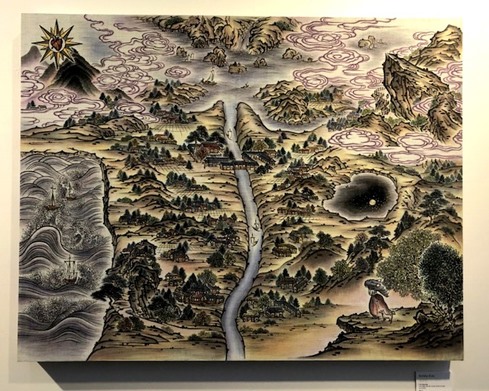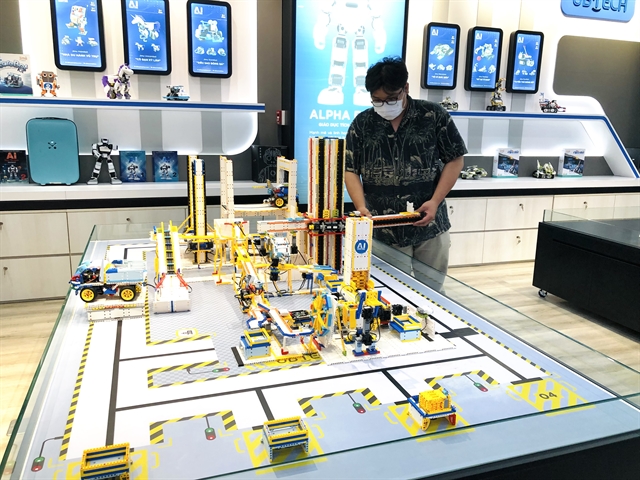

The perspective of Vietnamese and South Korean artists on modern society is reflected through 25 artworks including paintings, videos and installation pieces which are on display at an exhibition in Hà Nội.
 |
| Details: Narrow River by Kim Bo-min, ink and colours on linen and paper. |
HÀ NỘI — The perspective of Vietnamese and South Korean artists on modern society is reflected through 25 artworks including paintings, videos and installation pieces which are on display at an exhibition in Hà Nội.
The show is the result of co-operation between the Vietnamese Women’s Museum in Hà Nội, the Korea Foundation (KF) and CUC Gallery to celebrate the 25th anniversary of diplomatic ties between the two countries.
The title of the exhibition, Salt of the Jungle, comes from a work by Vietnamese novelist Nguyễn Huy Thiệp. It is the story of a white flower, said to bloom every 30 years in the jungle. In the novel, an old man finds the flower when he tries to catch a monkey. The novel is considered outstanding for its poignant metaphor of Việt Nam after the đổi mới (renewal) period.
It criticises humans’ ambivalence when they make the mistake of destroying nature for prosperity.
A straightforward look at ambivalence is also found in the works by the artists invited to the exhibition.
They interpreted social changes in the process of rapid industrialisation and urbanisation via paintings, drawings, videos and installation works based on their own viewpoints, said Korean Ambassador Kim Do-hyun.
“Rather than presenting ideologies and events in a serious and heavy way, the artists deal with changes in daily life in a frank and light way,” he said.
Speaking at the exhibition opening on Wednesday, he pledged to boost cultural co-operation between the two countries.
“The exchange between Việt Nam and Korea through contemporary art is about to start. The current exhibition endeavours to facilitae further dialogue of the two nations.”
Korean and Vietnamese artists take a look back on their rapidly changing societies over the past three decades.
All the Vietnamese artists taking part in the exhibition were born and grew up after 1986, so they experienced the economic reforms of the đổi mới period.
The Korean artists also experienced democratisation and economic development in the 1980s and the Olympic Games. They forged their own identity, different from the identity of the previous generation.
Observing the social transformations of the past 30 years, both Korean and Vietnamese artists face mixed feelings: they suffer the loss of nature, traditions, and myths due to rapid industrialisation but are also happy about the changes that brought with them a chance to encounter different cultures.
Kim Bo-min takes an interest in images that convey stories, exploring and excavating maps, myths and traces of changes in the city. In her works, Kim chooses to portray these stories in calm and tranquil ink-wash paintings.
Undertaking an obsessive inquiry into the artificial windmill palm leaves aka Dosiru, Jo Hyejin discovers complex layers of culture, history and capital in an everyday object, and unravels it in a chain of sculptural forms.
Art Labour (Việt Nam) showcases videos exploring the life of the Gia Rai people intimately entangled as they are with the coffee industry.
Nguyễn Phương Linh captures the reality of rubber plantations in south-central region.
The Propeller Group extends tire tracks of motorbikes – a popular mode of transport in Việt Nam – into a medium of expression.
The exhibition will run until July 25 at the Vietnamese Women’s Museum, 36 Lý Thường Kiệt Street, Hà Nội.
Before the opening in Hà Nội, the exhibition was organised in Seoul and Busan last year. — VNS
 |
| Life stories: Visitors contemplate artworks at the exhibition Salt of the Jungle. — VNS Photo Hương Sen |









